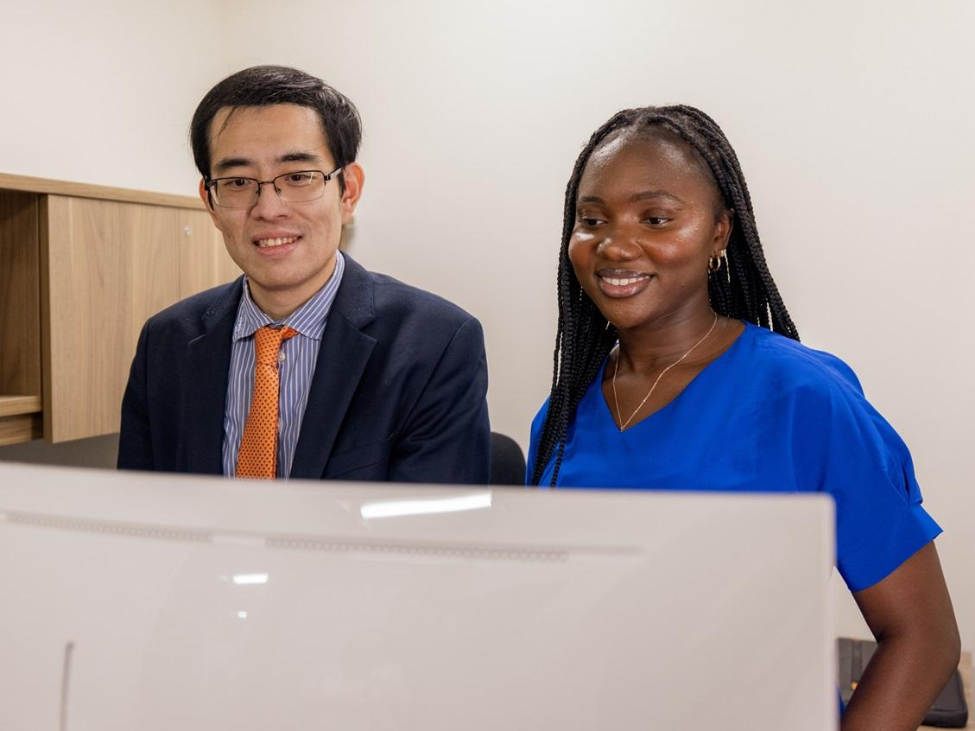A healing algorithm: Leveraging artificial intelligence for better patient outcomes


In the ever-expanding sphere of artificial intelligence, Xiaoqian Jiang, PhD, and his team at McWilliams School of Biomedical Informatics at UTHealth Houston are harnessing the technology’s vast potential to improve health.
“My goal is to make health care more predictive, personalized, and precise,” says Jiang, who is also a member of the UTHealth Houston Institute for Stroke and Cerebrovascular Diseases.
One of his many ongoing projects provides patients who had a stroke with personalized feedback on their rehabilitation exercises, allowing them to recover at home rather than in a hospital. This automated program traces the movements of a patient’s joints to see if they align with what the exercise requires.
“Patients must perform intensive exercises for recovery, but accuracy is crucial,” Jiang says. “Stroke patients, for instance, may unconsciously rely more on their injured side, which can exacerbate their condition. Our AI program allows us to monitor the exact angles of joint movement to ensure exercises are done correctly.”
Jiang is also developing a bilingual communicator, which will enable two people sitting side by side to have their words translated in real time, from Spanish to English and vice versa. The program takes only 1.2 seconds to convert a spoken word into the other language, allowing a regularly paced conversation between people in many health care settings. In fact, the communicator produces more reliable results with long sentences than a human translator.
“While human memory has its limits, machines can capture every single word,” Jiang explains. He notes that the program can be precisely customized with specialized terminology relevant to specific medical fields, such as those used in ear, nose, and throat clinics or cardiac practice. It can also be adjusted to accommodate patients with varying levels of medical literacy.
The next evolution of this communicator will enable it to gauge a patient's health literacy and adjust the language of the response accordingly.
In another project, Jiang is developing an automatic speech recognition and coding program that will streamline processes. Ordinarily, physicians take notes during patient appointments and must later enter that information into a database. This program takes notes for them, and the physician will review the material. The program helps physicians by reducing time-consuming documentation, meticulously capturing details during the conversation. It also enhances the physician’s ability to retain critical information, effectively augmenting their memory.
“This introduces an additional layer of protection for the data,” Jiang says. “It enables physicians to apply their clinical expertise more effectively in reviewing the information.”
These projects receive partial funding from the Christopher Sarofim Family Professorship in Biomedical Informatics and Bioengineering, an endowment held by Jiang. Additional philanthropic resources would enable more exploratory research into the ways AI can improve lives. In particular, Jiang hopes to pursue the vast potential of robotics to aid in health care delivery.
As Chair of the Department of Health Data Science and Artificial Intelligence, he seeks to make McWilliams School of Biomedical Informatics a global leader in the field and envisions a future where AI works to prevent illness.
“By leveraging AI, we are tackling pressing health care needs, such as disease detection and physician workflow enhancement. Our goal is to seamlessly integrate these technologies to holistically transform health care,” Jiang says. “In the long run, AI will comprehensively support health management across the entire spectrum, gathering data continuously, not just during illness, but also in periods of wellness.”
This will provide a full picture of an individual’s health, allowing early detection of issues to prevent them from becoming major health concerns. “The potential benefits of this are immense, not only for individuals but also for society at large, in terms of health outcomes and cost savings,” Jiang says.
